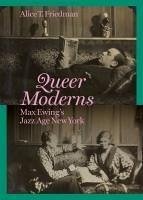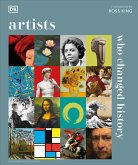"A richly illustrated history of the glittering world of queer artistic life in the 1920s and '30sIn Queer Modernism, Alice Friedman tells the fascinating story of the queer avant-garde of the 1920s and '30s in New York, Paris, and Venice, as seen through the eyes of Max Ewing (1903-1934), a young musician, photographer, and man-about-town who, although virtually unknown today, moved in extraordinary circles. In his photographs and letters, we meet the rising stars of modern art, music, dance, and literature and enter a world of interracial friendship, "queer space," and experimentation that shone brightly before being swept away by the Depression. It is a remarkable story that reveals that the history of modernism is more queer and more Black than previously recognized.In the 1920s, Ewing became part of an international coterie of artists led by Carl Van Vechten and Muriel Draper. In Europe, he was entertained by Gertrude Stein, met Stravinsky, and took a road trip with Romaine Brooks and Natalie Barney. In 1928, in a closet in his apartment, Ewing created the Gallery of Extraordinary Portraits, an installation of photos of his favorite celebrities-Black and white, clothed and nude. For his Carnival of Venice, he took portraits of more than a hundred friends-including Paul Robeson, Berenice Abbott, Isamu Noguchi, Agnes de Mille, and E. E. Cummings-posed in front of a backdrop of Saint Mark's Square.Like a character from a story by F. Scott Fitzgerald, Ewing joined the party and then died tragically, unable to accept the end of his era or the lost dream of a new way of living. His story sheds new light on modernism and an artistic milieu that was ahead of its time"--
Hinweis: Dieser Artikel kann nur an eine deutsche Lieferadresse ausgeliefert werden.
Hinweis: Dieser Artikel kann nur an eine deutsche Lieferadresse ausgeliefert werden.








